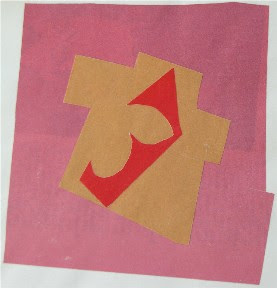
Image: Uncertain Truth, 2010: Oil on Canvas, 120 x120cm
My first show at a public gallery opens today at Goulburn Regional Gallery (title link) and continues until 4th December. I'll be conducting an Artist's talk on Saturday at 2pm and a Master class in Landscape painting the following Saturday at 1-4pm.
A bit of a "Hit and Run" exhibition, but I was very happy to take the dates offered as, according to Regional Arts policy, shows at Regional Galleries, "provide an individual artist with professional and public acknowledgement of career excellence and achievement and therefore will only be awarded to artists meriting such achievement"; (end of shameless personal back slapping).
The show marks a departure for my work involving a reliance on digital images and tonal work rather than memory, imagination and colour as per previous exhibitions. So I thought I'd share a bit of the process...
The idea germinated after my weekend painting in Bithry's Inlet in the beautiful Bega Valley (the first time I had gone bush for years) when I found myself tracing tree branch movement directly onto the canvas, in paint, as the sun rose swiftly in Autumn; and because of my frustration in not being able to spend time in the landscape (work commitments, money). On the one hand, I realised my work had always been about movement in and through the bush (or it's opposite, the stillness or lack of motion) and also, that this frustration of not spending time in the landscape was a reality for a city dweller who spent more time hurtling through it in a speeding car, to another urban destination. So I decided to deal with it.....
I also knew that the reason I painted landscape was because somehow it allowed me to hang the paint on it's structure - to play around with paint (hence the exhibition name). I am really more interested in that than the landscape itself, though it certainly has a healing and spiritual dimension for me and great associations with my father. So I decided to leave the grid used to draw up the image - and literally hang the paint off that...then that lead to me musing how the grid framed the paint to make abstract paintings (Yay! display the paint), and how it kind of pinned the motion (landscape as "Still Life" whilst moving, another theme in previous exhibitions). It also reflected the experience of travel at speed - stuck in capsule, a small piece of the larger picture, isolated and distanced from the reality around me. So I decided to amplify the process, reflecting the removal from the original in 1. taking the photo; 2, printing it out; 3; gridding it up to transpose to canvas; 4. Painting it - so I left these elements in (most of) the final paintings. The laborious process, conversely, allowed me to engage in the landscape in a far more intimate way than in the reality of capturing the image with the click of a camera.
The way I painted the areas within the grid also reflected the capturing of the image - a balance between control (right focus, ambient light/time of day, and adequate speed of vehicle) and chance (click without being able to actually see what is being taken due to the speed of travel) and in the best paintings, this is very successful. It also reflects the printing of the image via digital printer, as some of the photographs printed incorrectly due to a lack of the correct toner (and were deliberately painted that way), some were lined due to the way digital images printed out with blocked toner ducts etc, and these were left in. Again, control and chance plays its part...
And I was fascinated that I could get an image that was taken from the real, but doesn't reflect anything that actually exists outside of my computer, now, and can only be captured under certain circumstances and then not easily repeated. Is it real or illusion, concrete or abstract?? The boundary between the two has always been my interest - how far can an image be adjusted until it deteriorates,; how far can reality be pushed until it abstracts? Walking that line etween abstract and real has been the measure of my work to date. Ahhh! The uncertainty of reality...
Well, that's enough rumination for now, come to the artist's talk or go look at the work here
















